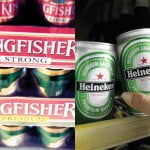
The Oculus Rift, which is owned by Facebook, won’t be available until early next year, but many of the two billion consumers worldwide who own smartphones can already try out virtual reality on the cheap with Cardboard, a device from Google that folds into a viewer with a slot for a smartphone. As more devices come to market with the aim of making virtual reality more commonplace, advertisers and agencies hope virtual reality will be the next great medium for persuading consumers to buy stuff.
For now, marketers are producing mostly eye candy in their own apps and on YouTube’s #360Video channel. But with virtual reality movies, shows and stories coming soon, the question is what kind of ads, if any, will work on the platform.
Companies including Coca-Cola, Volvo and HBO are struggling to figure that out. So are publishers like Facebook, which introduced 360-degree ads on Thursday, including video ads from AT&T, Nestle and other brands. The first obstacle is that it is not yet clear what kind of programming besides games will catch on in virtual reality to provide a place for that advertising.
“There’s lots of spectacle, but I can’t name one great story in VR,” said Ben Miller, director of content development at WEVR, a virtual reality entertainment and technology firm in Venice, Calif. And without a clear consensus on what sort of content will succeed in virtual reality, it’s difficult to predict what form the advertising will ultimately take. Success in the new medium will depend on finding the equivalent of the 30-second TV spot or the digital search ad.
Like juiced-up View-Master toy stereoscopes, virtual reality headsets such as the Rift allow viewers to navigate three-dimensional videos and animations. The 360-degree images and sound shift with the user’s head movements, tricking the brain into reacting as if it were all real.
Very real. In one scene of a virtual reality video shot for the outdoors retailer the North Face by the production house Jaunt, mountain climbers leap off a sheer rock cliff in Moab, Utah, before opening parachutes.
“VR is a way to create intense moments and rich, enveloping experiences that can help bolster a brand’s story,” said Adrian Slobin, global innovation lead at the digital agency SapientNitro. It also accommodates old-fashioned branding, like the big North Face logo that hid Jaunt’s 360-degree camera rig in the video.
In April, the luxury denim designer 7 For All Mankind, Elle magazine and Jaunt produced a minute-long impressionistic vignette of a model walking around a French chateau. It was intended more to let the brand bask in the reflected glow of the shiny new technology than actually show off its spring line. “We were, like, ‘Wow, how cool and exciting and new – we’re in,’ ” said Barry Miguel, 7 For All Mankind’s president.
The main event, though, will be advertising that occurs inside other virtual reality content. Samsung, maker of the Gear VR headset, which is due this month, has announced a virtual reality video service for which David Alpert, an executive producer of “The Walking Dead,” plans to create a fictional series.
[“source -financialexpress”]




